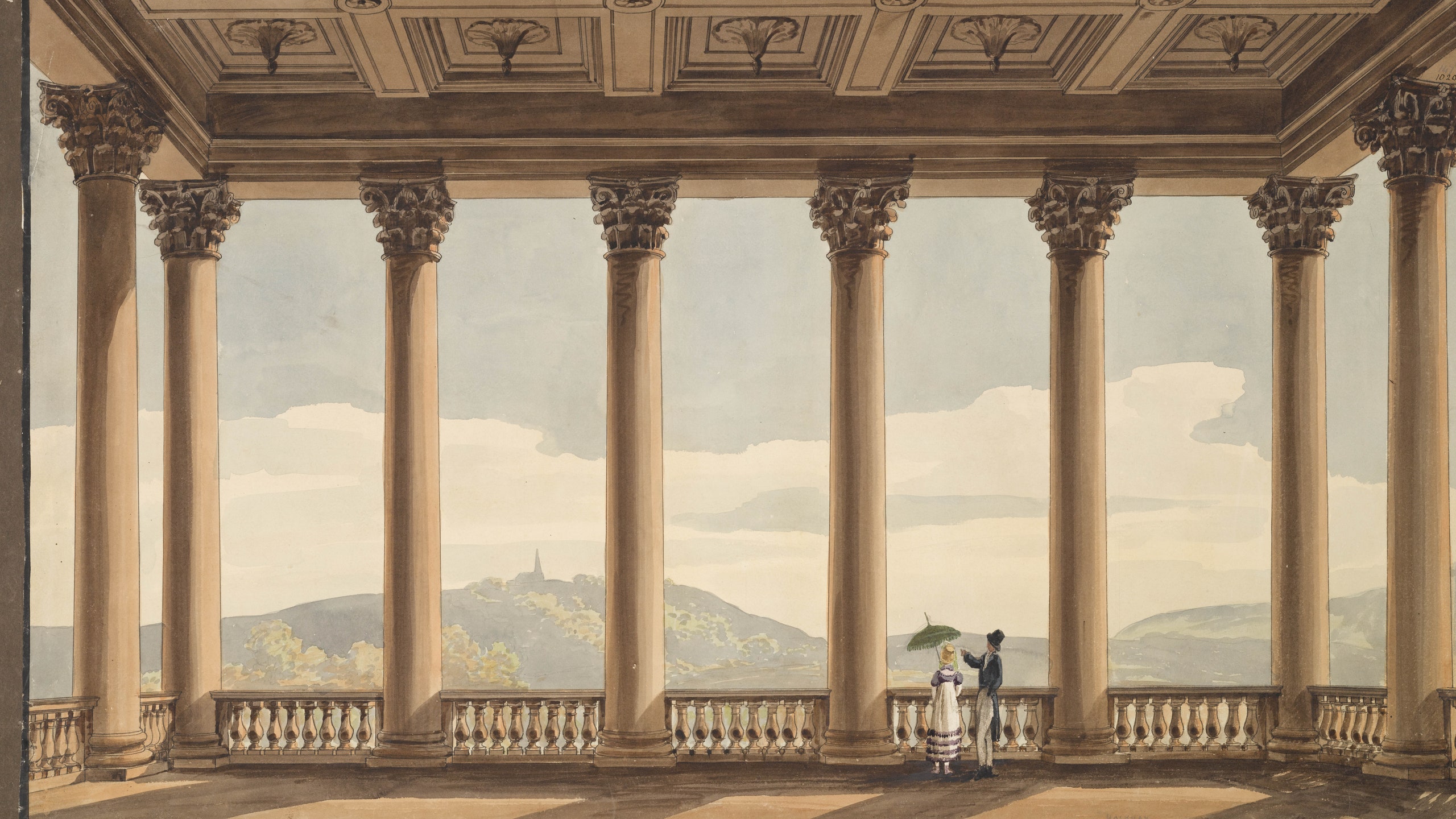Rarely do pandemics beget positivity. Happily for the Soane, an exhibition was born. Consider, if you will, a construction-site hoarding advertising its architecture. Consider those small figures (animal and human) – depicted, perhaps, holding a child, or dog-walking – their presence clearly adding something yet resembling no-one in particular. Ubiquitous in contemporary architectural images, these non-specific figures actually originate in fine art, especially 17th-century Dutch and French landscapes.
The term used to describe them, ‘staffage’, is potentially linked to the Old French word estoffe, meaning ‘stuff’, or the German word staffieren, ‘to decorate’. Flemish painter, poet and art historian Karel van Mander nicely termed them storykens ('little stories') in his 1604 Schilder-Boeck (Book of Painters). By the 18th century, they had stepped into building plans, adding counterbalance, colour, scale and animation, highlighting a purpose or key feature. Cannily, their presence in architectural drawings coincided with the repeal of the sumptuary laws (the restriction of certain fabrics and colours to the elite). Sharply dressed, they enticed investors through aspirational allure. Soon staffage was being included in the simplest of sketches, architectural lines visible through their bodies. Yet they themselves rarely secured the spotlight. Were they hiding in plain sight?
This all serves as an apt introduction to Fanciful Figures, an exhibition at Sir John Soane’s Museum with an in-house origin story. During lockdown’s doldrums, Frances Sands, its curator of books and drawings, contemplated a small sketch in her possession, a pen-and-wash figure inherited from her great-aunt Mary, an avid collector of all things Georgian. The drawing (one of a pair, the other owned by Sands’s brother) is not staffage per se, depicting a gentleman sporting a top hat, one hand cheerfully tucked into his frock coat (c1816). The artist was Antonio van Assen, a Dutch master and one of Soane’s favoured specialist figure artists. For decades his deftly drawn figures set the bar for architectural figure drawing. The connection sent Sands sleuthing for staffage among the Soane’s digital archive (containing over 30,000 specimens).
Dating from the 17th to the 19th centuries, the 33 selected works depict busy city traders, happy families, gloriously Rubensesque ‘primitives’ posed by huts (‘nude’ rather than ‘naked’), energetic street-boxers, Croatian men in dubiously authentic dress (as portrayed by an Englishman), and a cheerful clutch of children, dogs and horses. Some examples merge into self-portraiture, others operate as secretive ‘in’ jokes, yet others are comic. A surreal drawing of the Trevi Fountain by French artist Laurent Pécheux (c1755) depicts six out-of-scale figures gazing up at the stonework. With feet firmly below a heavy-set, ruled line, they seem to be placed along with us, the viewer – outside the fountain’s reality, rather than within it. (An allegory might be placing these figures at the bottom of a page, ‘reading’ along with the reader.)
The effect edges gloriously into the ‘meta’. One of the exhibition’s tender charms is its appeal to the very young. In a section reminiscent of Andy Warhol’s 15 minutes of fame, children’s author Beth Walker has endowed six figures with their own identities through ‘storykens’. (Proving this is a family affair, Walker, in a circular twist, was once head of education at the Soane.) One ‘storyken’ features Sands’s own engraving by Assen, now newly named ‘Joseph Carter’. From the young to the old, Sands’s great-aunt Mary, one suspects, would have smiled.
‘Fanciful Figures’ runs at Sir John Soane’s Museum until 9 June. For more information, visit soane.org
Sign up for our bi-weekly newsletter and be the first to receive exclusive exhibition stories like this one, directly to your inbox.
